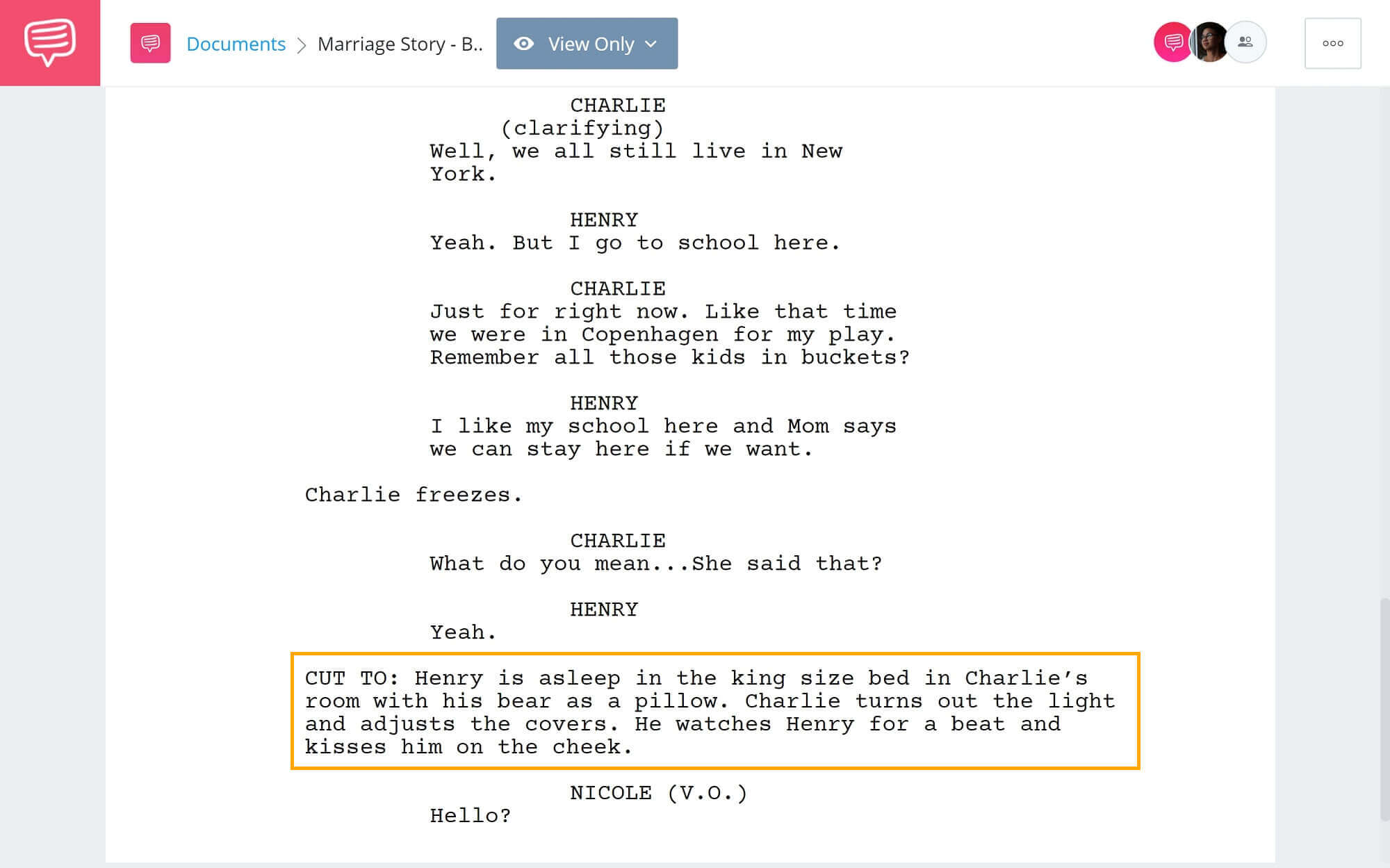Every story is broken up into sections: arcs, acts, scenes, and yes, beats. Of all the structural elements of a story, beats are the smallest. But what is a story beat in a screenplay and what’s the difference between a story beat and a beat meant to signify a pause in action or dialogue? We’re going to answer these questions by looking at some examples from Marriage Story, and Die Hard, but first, let’s review how writing beats are used.
What are Beats in Writing?
Let’s review writing beats
Writers use story beats to give their stories structure. Think about it, how does one take an empty page and fill it with the blueprint for a magical world? Some writers are blessed with the ability to bring their stories to life with ease, but those writers are few and far between. Most rely on technical expertise and strategy.
STORY BEAT DEFINITION
What is a story beat?
A story beat is a structural element of a narrative that’s used to mark an intentional shift in tone. Writers use story beats to structure their narratives and control emotional arcs of their characters. In screenwriting, story beats are sometimes written into the scripts. Although less common in practice now, many writers used to write “BEAT” or “a beat” in their scripts to communicate a shift in tone and move the story forward to a new stage. You might also see "beat" in a screenplay to be intended as a pause, either before an action or a bit of dialogue.
Writing Beats Examples
- When a character realizes something
- To reveal a twist
- When a character is “backstabbed”
It’s much more common for a beat to appear in the actions/descriptions margin of a script, stated in caps as A BEAT. This can either denote a story beat or a simple pause in the action. Knowing when and where to put beats is just one part of formatting a screenplay.
Story beats help screenwriters track the plot structure of their stories. With a simple keyword search, you can track the entire arc with all the major shifts in tone marked as “beats.”
Related Posts
Beats in Movies
What does "beat" mean in a script?
What is a beat in screenwriting? The term “a beat” is often used interchangeably with the term “a moment.” This type of beat in a screenplay is meant less for story and plot and more for performance. Here’s an example of a beat in screenplay format — Noah Baumbach’s Marriage Story screenplay features an example of using “a beat” instead of “a moment.”
Marriage Story Script • Beat in Screenplay Example
This particular use of the story beat is exclusive to screenwriting. Creative prose writing never includes margin commentary, so it makes sense that you wouldn’t see “a beat” in a book.
Narrative Beats
Story beat examples
In addition to their previous examples of use, story beats are used as structural components of a narrative as well. Like we alluded to earlier, Blake Snyder’s Save the Cat! structure takes The Hero’s Journey and breaks it up into 15 distinct beats. Each beat is meant to move the story forward in a new and meaningful way. Let’s take a look at the 15 beats:

Story Beat Examples • Save the Cat Beat Sheet
One of the most important aspects of the Save the Cat! structure is that it gives the protagonist something to do and a reason for us to care about their journey. It may sound simple, but an interesting plot can be really hard to pull off. But as long as we can empathize with the protagonist’s actions, we’ll root for them, and hope that they can “save the cat.”
Let’s take a quick look at the Die Hard screenplay to see how writer Jeb Stuart made a compelling one of the best action movies of all-time fit tightly into the Save the Cat! structure. Ask yourself as you’re reading: who is “the cat” that John needs to save?
Die Hard Screenplay • Emotional Beats Writing
In Die Hard, John McClane has to save his estranged wife Holly. We empathize with him because he displays acts of heroism, and is a flawed character. John’s journey takes place over 15 emotional beats, which create a resolute, and immensely satisfying denouement.
For other plot structures, you might also be interested in Dan Harmon's Story Circle or the Pixar Formula. With any formula, remember that they are designed to inspire and give your story direction.
UP NEXT
Elements of plot structure
The Save the Cat! template is just one tool available to help writers master the art of dramatic writing. In this next article, we break down all the different ways screenwriters utilize plot structure in their scripts, including telegraphing and dramatic tension. By the end, you’ll have a dozen new ideas for how to plan your next story.


